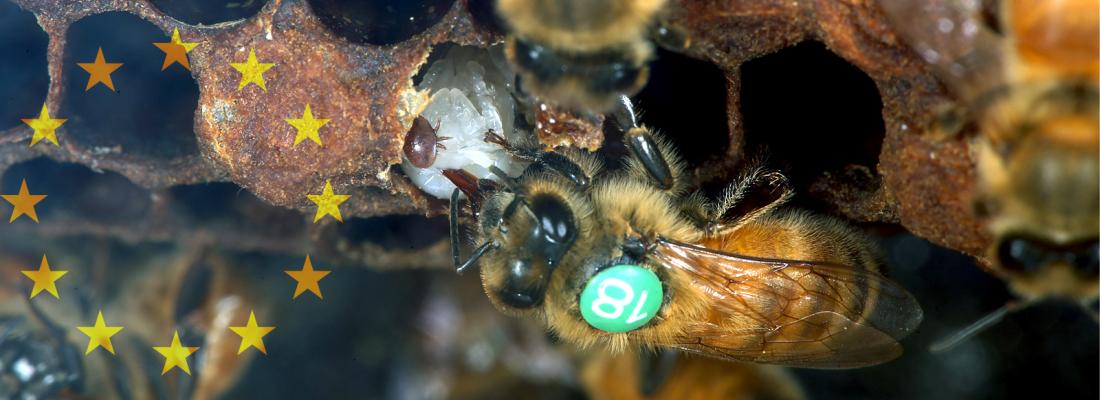Biodiversity Reading time 3 min
An ERC Grant for Fanny Mondet to study hygiene bee-haviour
Published on 05 July 2023

The highly selective Starting Grant programme of the European Research Council (ERC) finances high-risk, high-potential frontier research. ERC Starting Grants support young researchers with a proven ability to conduct research independently and who apply creativity to an innovative project. Grants are awarded based on a single criterion: excellence. In 2022, out of 2,932 projects submitted for funding, approximately 14% were selected.
Already threatened globally by climate change and agriculture intensification, honeybees must also deal with the Varroa destructor parasite, a deadly mite and major cause of colony loss worldwide. The bees of certain colonies, however, stave off infection by cleaning infested cells to limit the spread of the parasite. How do they do it? Fanny Mondet’s ERC Bee Healthy project explores the mechanisms of these valuable skills [1]. Her approach is based on two bold assumptions:
- It is commonly recognised that bees protect their nest by detecting olfactory signals of disease or death in fellow bees. Fanny moves beyond this idea by postulating that, on the contrary, bees continuously verify whether colony populations are in good health to ensure a universal response capacity. Unburdened by the need to recognize all the signals specific to a given disease, bees can take decisions and act when a signal variation is detected in an individual.
- When a bee perceives an infected or infested cell, it opens it: to either sacrifice the nymph and clean the cell; leave it open and thus alter the micro-environment needed by the mite to reproduce; or re-close the cell if the nymph can continue its development. While these different forms of hygiene behaviour are commonly considered to be unrelated, Fanny estimates that they originate from the same detection system, which responds in different ways depending on the situation.
To test her hypotheses, Fanny will combine individual- and colony-scale approaches as well as different disciplines such as neurophysiology, molecular biology and chemical ecology. Together, her results will provide an explanation as to how hygiene behaviour mechanisms arise and are regulated while providing new, wider knowledge on the subject of social immunity.
This ambitious project will pave the way to the development of new methods to fight Varroa in the beekeeping sector, where existing solutions present significant limitations. Through her results, indicators may be established that identify whether a colony is hygienic and equipped with adequate defences against Varroa. Results will thus provide solutions for more sustainable beekeeping and agriculture that protect pollination ecosystems.

WHO IS FANNY MONDET?
Fanny first took an interest in the connections between agricultural and environmental issues while studying biology at the Ecole Normale Supérieure (ENS) in Lyon, France. She decided that bees were a good working model and has kept it since! While completing a Master’s-level internship at the University of Otago in New Zealand in 2008, she explored bee neurology and their behaviour in environments organically treated against Varroa. After obtaining an engineering degree from the Corps des ponts, des eaux et des forêts (a technical Grand Corps of the French State) in 2011, she went on to complete a PhD in zoology on host-parasite interactions between bees and Varroa. Fanny joined the Bee and Environment unit of the Plant health and environment division (SPE) at INRAE as a researcher in 2014. She is based at the Avignon site of the Provence-Alpes-Côte d 'Azur centre.
[1] “Bee Healthy”: If you are not healthy you are out: how honeybees develop resilience towards invasive species events with an immune system at the colony level
